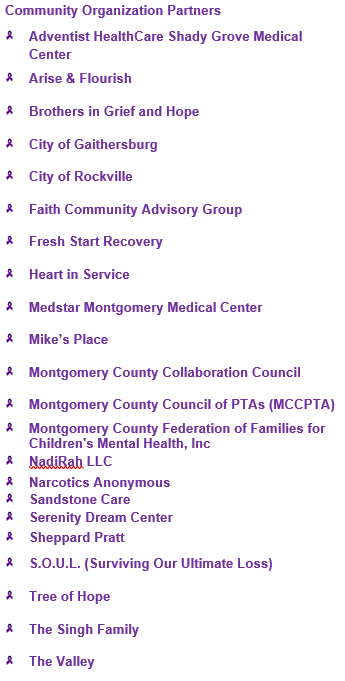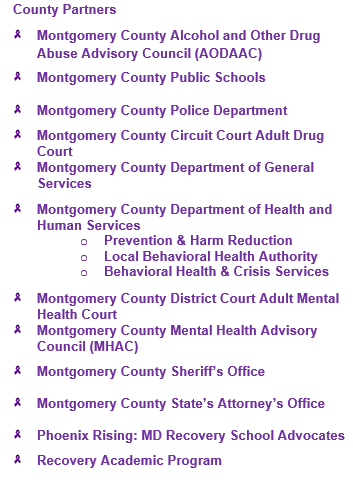Urgent Message from the MCPS School System Medical Officer
December 9, 2022
Dear MCPS Community,
I am reaching out to make sure students, staff, and families are aware of a very dangerous trend in substance use affecting our community. Synthetic opioids, specifically illegally made fentanyl, are increasingly responsible for overdoses and overdose deaths. In 2021, over 70% of all overdoses in Montgomery County were fentanyl related including substances laced with fentanyl or substances that look like something else (e.g., Xanax, Adderall, Percocet, or oxycodone) but had fentanyl in them. MCPS continues to work diligently alongside local government authorities and community partners on a comprehensive and coordinated approach to this dangerous epidemic.
What is illicit fentanyl?
Fentanyl is a prescription medication for pain that is 50-100 times more powerful than morphine. The type of fentanyl driving overdose deaths is illegally made and sold in the form of powder, pills, liquid, or nasal sprays. Other drug products like marijuana, cocaine, heroin or illegally sold pills thought to be prescription medicine may be laced with illicit fentanyl, without the knowledge of the user.
Why are youth taking drugs, such as fentanyl and how are they getting them?
Teenagers and even younger children may use illicit substances for multiple reasons. Experimentation or peer pressure may prompt a single episode of use that leads to further problems. Youth struggling with mental health symptoms, pain, or already using other drugs may be more likely to experiment or have problems related to substance use. With fentanyl, it is important to know that individuals may not even know they are taking it, as it is often incorporated into other substances. Drug traffickers may use fentanyl to increase the potency of their products. They also use social media to promote and sell drugs, making them more available to youth from peers or directly from online sources or through social media.
Why is illicit fentanyl so dangerous?
Because fentanyl is such a highly powerful opioid, very small amounts can lead to a potentially fatal overdose from even one use, and the person may not even know that the drug taken contained illicit fentanyl. The potency of fentanyl also means that individuals seeking temporary effects for relaxation, pain relief, or pleasure may find themselves quickly addicted. Once addicted, they may need to use as frequently as every 2-3 hours to avoid very uncomfortable withdrawal symptoms, including extreme nausea, vomiting, diarrhea, anxiety, sweating or chills.
What can adults do to help?
Parents and other caregivers can educate themselves and foster conversations with children about the dangers of drug use, specifically fentanyl and how to avoid use, family expectations around use, and the availability of help and support. Recognizing potential signs of substance use, trauma, and mental health symptoms will help youth and families access support earlier and help avoid dangerous or fatal outcomes.
Naloxone (Narcan) is an emergency medication given by nasal spray that can work instantly to reverse opioid overdose. It is important to know that the effects of naloxone are temporary and when used to treat an overdose, individuals will still need emergency medical attention (911). The effectiveness also depends on the potency of the drug and dose taken, so higher doses of naloxone may be required for powerful opioids like illicit fentanyl. Maryland’s Good Samaritan Law protects individuals from prosecution from certain crimes, who are providing assistance to another person experiencing a medical emergency related to alcohol or other drugs.
As part of ensuring medication safety in their homes, families should strongly consider keeping naloxone available, especially if they store prescription opioids or have concern that youth may be at risk for dangerous opioid use. Montgomery County residents can access naloxone, and training on how to use it, for free without an individual prescription. If you would like training on naloxone administration you can register at this link. To access free naloxone, Montgomery County residents can call DHHS Harm Reduction Services at 240-777-1836.
What is Montgomery County Public Schools doing about illicit fentanyl in our community?
MCPS remains committed to a safe and substance-free school environment, and to our mission of supporting students and all those in our community who work to ensure their success and well-being. The Office of the School System Medical Officer is working closely with the Montgomery County Department of Health and Human Services (DHHS) and other community partners within the Montgomery Goes Purple initiative to develop community-wide efforts in prevention, harm reduction, and treatment. These efforts include initiatives that broadly address substance use and mental health, and also focus on the specific problems of illicit fentanyl. Our shared goal is to ensure school-based programs integrate with local and county-wide efforts, which reach all children and families in our community.
The opioid crisis continues to have devastating effects nationwide and also in our community, and everyone can play a role in fighting this epidemic. Let’s take this opportunity to work together to protect our youth and families, and to advocate for their healthy future.
Sincerely,
Patricia Kapunan, M.D., M.P.H.
MCPS Medical Officer
ADDITIONAL RESOURCES
Montgomery County and Maryland:
Montgomery Goes Purple - MGP is Montgomery County’s coalition of government agencies, community organizations and individuals offering education, resources and support regarding substance use and recovery, for the entire community. Select resources from the coalition:
List of Substance Use Treatment Providers for Adolescents in Montgomery County (Additional resources can be located through SAMHSA’s Behavioral Health Treatment Services Locator)
Family Support Virtual Meetings for Parents or Caregivers of Children or Youth Living with Mental Health, Substance Use, or Co-occurring Challenges
Montgomery County Department of Health and Human Services’
“Know the Risks” Opioid Resource Center - education, services and other resources for Montgomery County residents.
Child and Adolescent Assessment Services (CAAS, formerly called SASCA) - provides mental health/substance use screenings for residents under 18 years old. Call 240-777-4000 to schedule an appointment.
BTheOne - Teen friendly resource on how to support friends and loved ones struggling with mental health or substance use. Includes crisis and advocacy resources.
Harm Reduction Services- Providing free education and harm reduction supplies to the community including access to naloxone and training, fentanyl test strips, and other harm reduction supplies and referrals for those struggling with substance use disorder. Call 240-777-1836 or email overdoseresponseprogram@montgomercountymd.gov
Parent CRAFT is a video training free for Maryland parents and other caregivers interested in learning skills to support teenagers around substance use.
Maryland Insurance Administration - offers information on health insurance coverage for mental health and substance use treatment. Health insurance companies are required by law to cover this care in most cases. More information can be found on the Parity at 10 website; individuals can contact the Legal Action Center if having difficulty accessing treatment for this reason.
Emergency Resources:
988: The Suicide and Crisis Lifeline (formerly known as the National Suicide Prevention Lifeline) - Counselors offer confidential services 24/7 by phone by calling 988, or by web chat or SMS text. Special services are offered for LGBTQ+ people under age 25 years.
Montgomery County 24 Hour Crisis Center - 24/7 in person or telephone support for all crises, both psychiatric and related to other situations. Services include a Mobile Crisis Team that provides emergency crisis evaluations. Call the Crisis Center at 240-777-4000, or seek in-person services at 1301 Piccard Drive, Rockville, MD 20850. Services are available in multiple languages and for residents of all ages.
Maryland Department of Health Overdose Response Program: “How to Use Naloxone”—Includes information on recognizing an opioid overdose and video training for naloxone.
University of California, Davis, Medical Center: “How to Use a Naloxone Kit in the Event of an Overdose”—A handy one-pager (double-sided) on how to recognize and overdose and use naloxone.
General Education:
Children’s National Hospital - “Rainbow Fentanyl: The Trending Drug Parents Need to Know About” by Child and Adolescent Addiction Psychiatrist Dr. Kaliamurthy.
American Academy of Pediatrics’ Substance Use Resource Page - “The Opioid Epidemic: How to Protect Your Family”; “Talk to Your Teen About Drugs - And Keep Talking”; “When Teens Use Drugs: Taking Action”.
The CDC’s Opioid Resource Center includes specific information about fentanyl and other synthetic opioids, overdose prevention, and the emergency medicine naloxone (Narcan).
One Pill Can Kill , an educational campaign of the United States Drug Enforcement Administration - “What Every Parent and Caregiver Needs to Know about FAKE PILLS”; “Counterfeit Pills Fact Sheet”.
|
|

|

|
Email us: ASKMCPS@mcpsmd.org

 Montgomery Goes Purple
Montgomery Goes Purple
